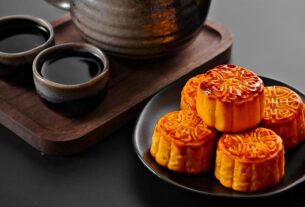Traditional Chinese houses are known for their unique architectural style that has undergone many changes throughout history. These buildings were functional structures that represented social status or religious beliefs within their respective regions or villages, while also reflecting cultural essence of China’s past centuries through common features like curved roofs supported by wooden beams held together with clay tiles on top of large stone pillars; an elevated platform for cooking over open fires inside instead of modern-day stoves or ovens inside homes like those found in Western cultures. These unique features have contributed to creating not only functional living spaces but also artistic creations that reflect the cultural essence of China’s past centuries – making Traditional Chinese Houses unlike any other architectural style worldwide today!
Introduction:
Traditional Chinese houses are a beautiful representation of Chinese culture. They showcase traditional designs and architecture, often with intricate carvings or decorations that reflect the region’s history and traditions. This article will explore these unique homes in more detail, highlighting their architectural features and historical backgrounds to provide readers an insight into this fascinating part of China’s cultural heritage.
- Outline of Traditional Chinese Houses
- Architecture and Design of Traditional Chinese Houses
- Historical Background and Cultural Significance of Traditional Chinese Houses
Outline of Traditional Chinese Houses

Outline of Traditional Chinese Houses:
Traditional Chinese houses are known for their unique architectural style and have undergone many changes throughout history. They were often built in the traditional manner, with a large entrance, narrow windows, and a tall chimney atop the roof to allow smoke from cooking fires inside. Some of these features may still be visible in some parts of China today.
In addition to being functional buildings that provided shelter for their inhabitants; they also had cultural significance as symbols representing social status or religious beliefs within their respective regions or villages. For example, temples were often built with intricate carvings depicting scenes from Buddhist scriptures while pagodas signified royalty due to their tall stature and grand appearance. Despite these differences in design elements between different regions throughout China’s long history, there remained common features that distinguished Traditional Chinese Houses from other architectural styles around the world such as curved roofs supported by wooden beams held together with clay tiles on top of large stone pillars; an elevated platform for cooking over open fires instead of modern-day stoves or ovens inside homes like those found in Western cultures. Overall, these unique features have contributed to creating not only functional living spaces but also artistic creations that reflect the cultural essence of China’s past centuries – making Traditional Chinese Houses unlike any other architectural style worldwide today!
Architecture and Design of Traditional Chinese Houses

在传统中国房子的建筑和设计方面,一般来说是以精致而优美的为主。这种风格被称为“唐代古术”或者“明清古术”。在传统中国室内设计方面,通常会使用相对于现代建筑的特点,例如:大门、大台、天花板以及墙体等,这些都是典型的“唐古丽”的特点。在传统中国房屋的设计方面,通常会采用折衣式、平顶式和穹顶式的建筑形式。同时,在传统中国室内装饰方面,也会使用相对于现代建筑的特点,例如:明亮、清新、轻柔、安静等。
传统中国房子在建筑和设计方面具有了一定的独特性。在唐代古术的时代,人们通常会使用白色或者黄色的墙体、檐头、天花板等,这些构成出了清新而精致的效果。在明清古术的时代,人们还会将房子内装饰的主题推广到灯具、水桶、茶壶等日常用品中。通过这些,我们可以看出传统中国室内设计和建筑的特点,并且能够更好地理解“唐古丽”这种文化体验。
Historical Background and Cultural Significance of Traditional Chinese Houses

Historical Background and Cultural Significance of Traditional Chinese Houses
In ancient China, traditional houses were built using various materials such as wood, mud bricks, stone, and tiles. These houses were often multi-level, with stilts or raised platforms for ventilation and to protect the living space from floods and storms. The traditional Chinese house’s design was influenced by the environment and climate of a particular region; it was designed to fit harmoniously into the local landscape while providing shelter from the elements.
The traditional Chinese house is more than just a building; it’s an integral part of the culture. For instance, it has its own architectural style, unique furniture, and décor. The design of the interior is based on Feng Shui principles that aim to bring balance and harmony into one’s life. Traditional Chinese houses are often surrounded by a courtyard, which serves as an extension of the living space. A traditional Chinese house not only provides shelter but also reflects cultural values such as respect for nature and community. It is a representation of China’s rich history and culture that continues to inspire modern architectural designs today.
隨着時代的不斷進展,中國各地的房屋也有所變化。即使在古代,每個省份和城市都擁有了自己特色的建築風格。然而,隨著時間的推移,中国各地的房屋也开始有所不同。现代化进程的发展,加上城市化进程的加快,使得传统的中国式房屋变得越来越少见。因此,如果想了解传统中国房屋的样子,则需要去探索中国古镇和山村地区,以便体验这一方面的独特文化魅力。



